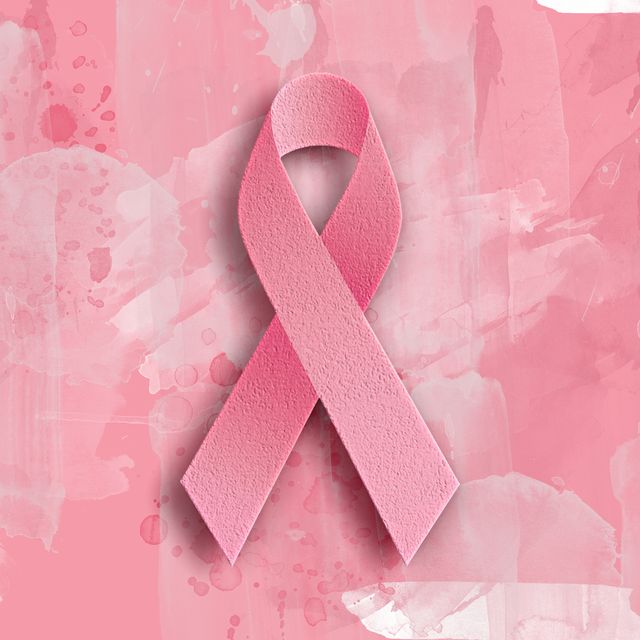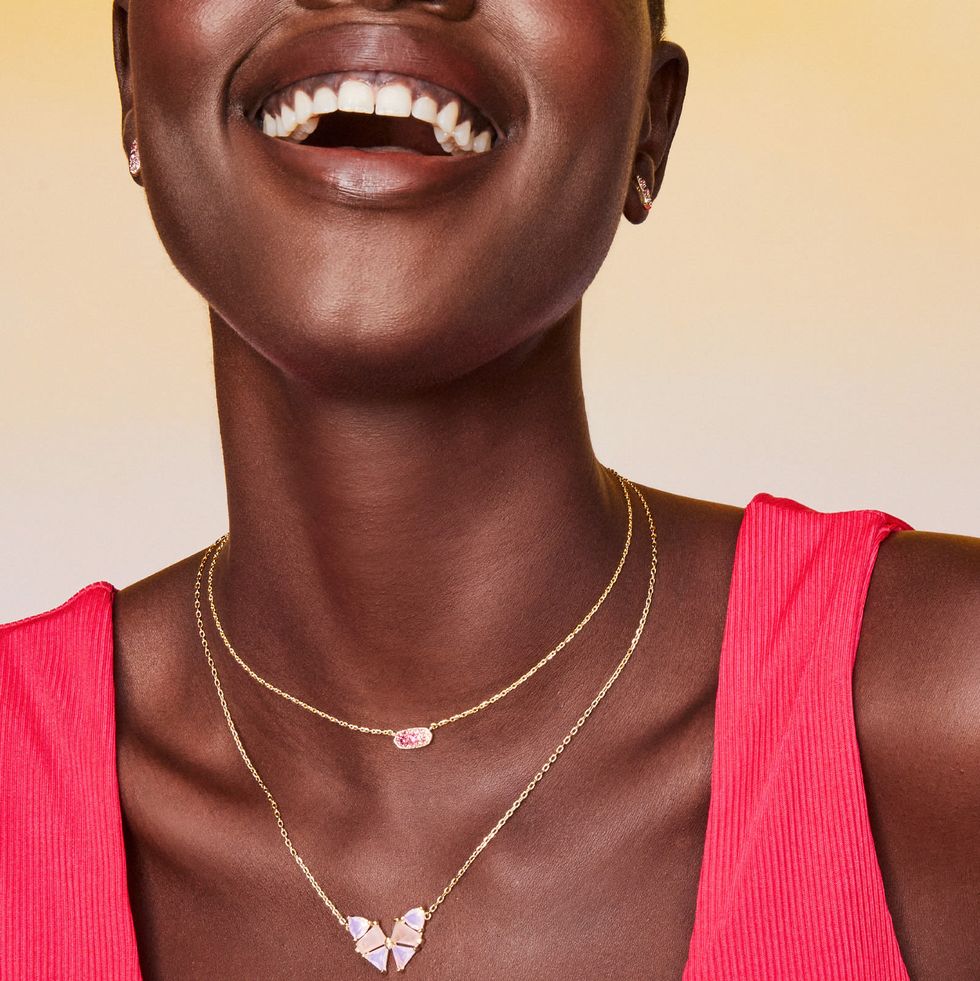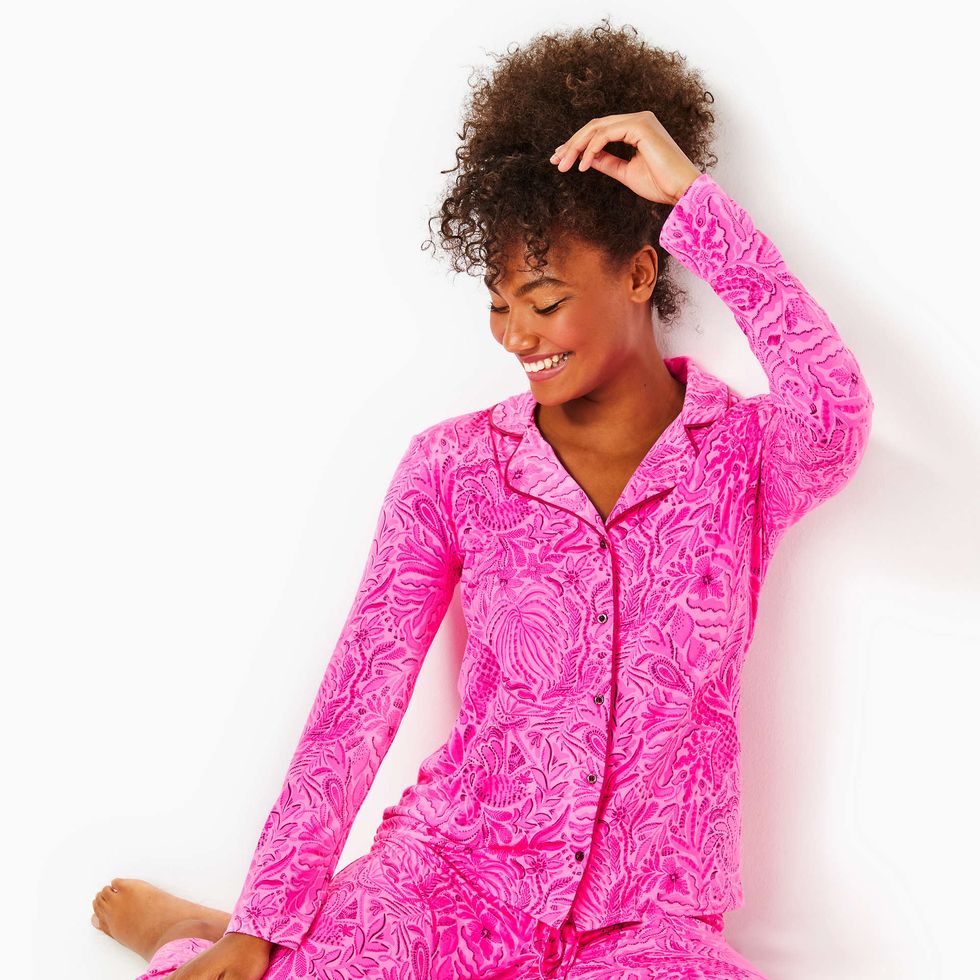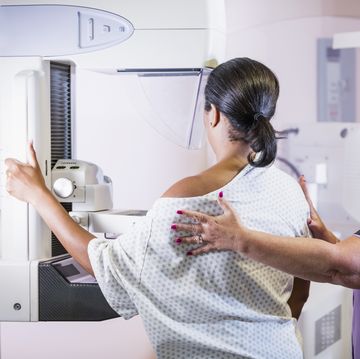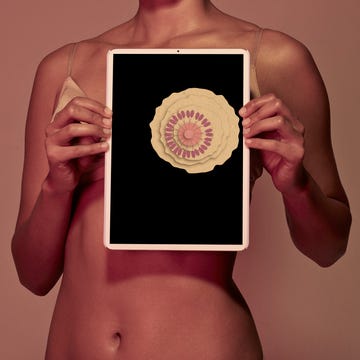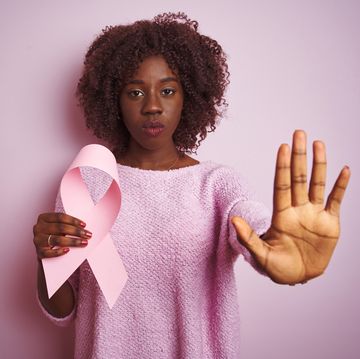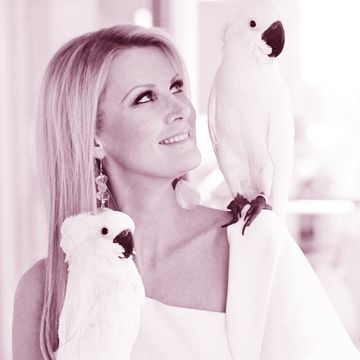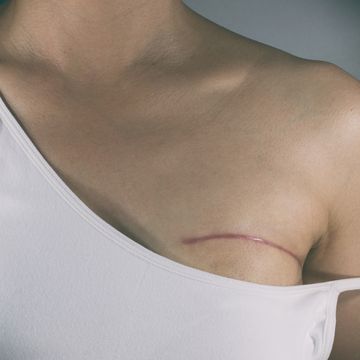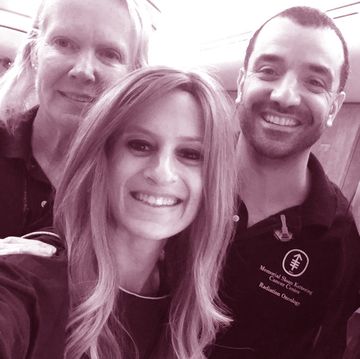They're easiest to spot during Breast Cancer Awareness Month in October, but they're sold all year round. That particular shade of Pepto Bismol pink showing up on everything from lipsticks, to water bottles to (apparently) drill bits. The cutesy slogans like “save the tatas,” “check your headlights” and “boost the boobies.” Breast cancer awareness is awash in feel-good slogans and bubbly hues enticing us to reach into our wallets to show support. And while there are products and companies that actually do help those living with breast cancer and donate meaningfully to breast cancer research, others just slap a pink ribbon-shaped sticker on their goods and call it a day.
Pinkwashing is when a company uses that recognizable pink ribbon symbol or signature shade to market a product or service without meaningfully supporting breast cancer research or awareness, explains Krystal Redman, DrPH, executive director of Breast Cancer Action, the organization that coined the term back in 2002.
“The lack of accountability and transparency in pink ribbon marketing is hugely problematic,” she explains. “Pink imagery is now one of the most widely recognized marketing tools for breast cancer, but it’s not regulated by any agency, and its use does not necessarily mean the associated product effectively combats the breast cancer crisis.”
While there's undoubtedly support and solidarity to be found in the pink ribbon, we all want to make sure our donation money is going to the cause. Fortunately, there are some easy ways to separate the bad actors from the good ones.
What is pinkwashing?
Many breast cancer survivors adopt the pink ribbon as their talisman in the form of tattoos, bumper stickers, apparel or all of the above. It’s pervasiveness has turned breast cancer into a common concern instead of a shameful secret — just about anyone who’s walked into a store or turned on the TV in October can’t help but be aware of breast cancer.
But the power of the ribbon more or less stops there. The vast majority of funding for breast cancer research comes from the federal government, not from the money raised by these types of marketing campaigns, according to Breast Cancer Consortium. And because it’s unregulated, how companies use the symbol or shade is up to them. Some beauty and wellness products sport pink ribbons to try and communicate that they are “healthy” and don’t contribute to breast cancer risks. Others use it to indicate that the company will or has donated a percentage of its profits to breast cancer programs or research. But there’s an asterisk there, too: Many don’t say how much they’ll donate or whether sales directly impact the size of the check they're cutting — some companies will cap the amount they'll share, no matter how much is sold.
Why it's harmful
When companies keep the focus solely on awareness and not action, pinkwashing can actually hurt the very cause it’s intended to support. “Focusing on ‘raising awareness’ implies that if only people were more aware of this disease, somehow the breast cancer crisis would be solved,” Redman says. “This is obviously incorrect. We are all aware of breast cancer, and it is still the most commonly diagnosed cancer worldwide.”
Pinkwashing campaigns also tend to focus on what individuals can do (and what they should buy to make themselves feel better about it). For example, many encourage people to get breast cancer screenings. While early detection does save lives, self-exams and mammograms don’t cure cancer, nor do they reduce the risk for the population in general. This shifts attention away from the corporations and industries that claim to support breast cancer research but actually contribute to the breast cancer epidemic by using ingredients that elevate breast cancer risk or donating to industries that do — not to mention legislators and regulatory agencies that allow for that to continue, Redman says.
That’s where BCAction comes in. Their annual campaign, Think Before You Pink, works to expose companies that are pinkwashing, so consumers can know and understand where their dollars are going and why that makes a difference. "We should do our research, be critical of products and fundraisers to 'raise awareness' and seek out information about where the money behind pink ribbon promotions is going," says Redman.
How to spot (and avoid) pinkwashing
First things first: If you’re interested in advancing research toward finding a cure for breast cancer, it’s always better to donate directly to organizations that are doing that work so you have a better sense of where your money is going. Some people like to donate to research foundations for types of cancer that have impacted them or their loved ones, like Metavivor, which supports metastatic breast cancer research. Others prefer social or political action groups.
But sometimes those cute pink pajamas or that snack you love that’s turned pink for a month is simply calling your name. In that case, the most important step in eradicating pinkwashing is to do your research and follow the money. BCAction has four questions you can ask yourself before you buy:
- How much money from this product actually goes to supporting breast cancer programs? Examine the fine print for information on where the company shares its proceeds from sales of a pink ribbon product and in what amount. Because the symbol isn’t federally regulated, this one might require a little research. Look for products or companies that clearly state how much they’ll donate for each purchase.
- What organization will get the funds? Some companies will say they give to “breast cancer research,” but don’t share any further detail. And because it's such a broad category, a number of organizations claim to advance breast cancer research but don't explain precisely how. Look for a statement that says which organization will get the money and, if possible, how it’ll be used once it gets there.
- Is there a cap on how much the company will donate? Sometimes, a percentage of product sales will go toward breast cancer research, but the company will cap it at a certain amount (or they'll donate a fixed sum no matter how many products are sold). If a company is capping the amount, look to see if the maximum donation has been met. If so, your money might be better spent as a direct donation.
- What is the company doing to contribute to the fight against breast cancer? Believe it or not, some industries that claim to support breast cancer research are actually contributing to breast cancer risk factors, like financial institutions that bankroll fossil fuel corporations. "Make sure the company's mission and activities are in line with your personal values," Redman advises.
Most importantly, if you see something, say something. “The best way to call out the hypocrisy in pink ribbon marketing culture is to demand systemic change solutions, because this is what pink ribbon profiteering is trying to distract attention away from,” Redman says.
Mara Model, a beloved member of the Good Housekeeping editorial team who died from metastatic breast cancer in November 2021 took time in the last weeks of her life to research and write about a few of the products that helped her through treatment for our sister publication Town & Country. Mara was passionate about putting an end to pinkwashing and educating people on which companies actually make meaningful donations to organizations supporting breast cancer research. "Donating to reputable breast cancer organizations is the only way we are going to get more concrete research and identify better ways to manage this disease so many women go through," she said.
